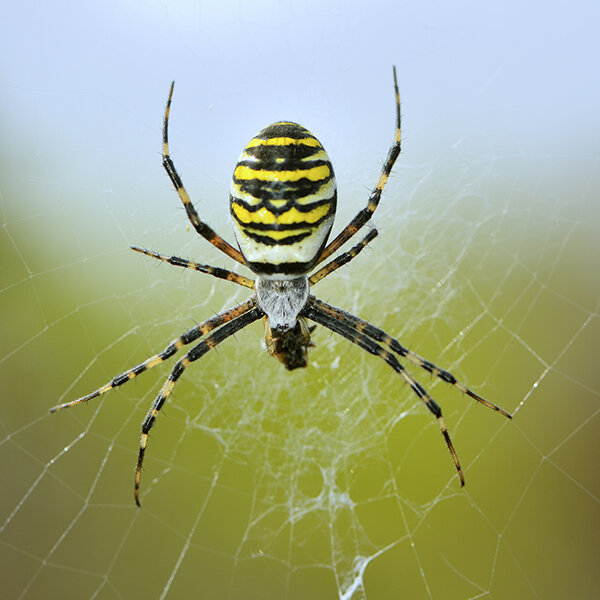Wasp spider
Argiope bruennichi
The wasp spider, as its name suggests, mimics a common wasp. The female is large, measuring 14-17mm, and has yellow, black and white stripes across its body and legs. She also has silver hairs covering her cephalothorax (the fused head and thorax). The male, in comparison is much smaller measuring only 4-6mm and is pale brown. The third set of legs of both the male and female are much smaller and shorter than the other legs. Although these distinctive and colourful spiders look like wasps, they are in fact completely harmless and cannot sting.
Their webs are orb-shaped like a common garden spider, but they have single zig-zag pattern of silk through the centre (called a ‘stabilimentum’). It is thought to reflect UV light and attract pollinating insects such as flies, bees and moths.
The wasp spider is thought to have originated in the Mediterranean, but colonised and spread, and has now become locally common along the south coast of England. They have moved northwards in recent years and can now be found in south and mid Wales, and as far north as Shropshire and Derbyshire.
What they eat
Their main prey is grasshoppers and crickets, but also beetles and large flies. They weave their webs in tall vegetation.
Where and when to see them
Wasp spiders are found in grasslands, coastal areas, farmland, heathland, woodland and gardens.
They are active from April to October.
View a wasp spider 10km distribution map of Wales.
Legal status
None
Similar species
None
Did you know?
The female of the species is more deadlier than the male! Males often get eaten by the females after mating!

